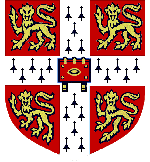| School | Troops | Resources |
The Cambridge Keynesians

[Note: Part of the HET Website. This page is not related to or endorsed by Cambridge University or any other organization. See the official Cambridge University website]
Strictly, the "Cambridge Keynesians" is a loose term used to refer to the unique group of British economists inspired by John Maynard Keynes's General Theory in a more "fundamentalist" way than the mainstream (mostly American) Neo-Keynesians of the post-war era.
Their origin stems from the inner circle, the five members of Keynes's "Circus" at Cambridge University in the early 1930s -- Joan Robinson, Richard Kahn, Piero Sraffa, Austin Robinson and James Meade. The "circus" was a study group that assembled together to read Keynes's Treatise on Money soon after it appeared in 1930 and thereafter commented on the successive drafts of Keynes's General Theory before it was published in 1936.
Forming a more distant ring, but in many ways no less important for the later development of Keynesian economics, were contemporary young economists in England at the time, such as Roy F. Harrod and Michal Kalecki at Oxford and Nicholas Kaldor, Abba Lerner and John Hicks at the L.S.E. -- who were the first to digest and expand upon Keynes's work, becoming thereby the flag-carriers outside of Cambridge proper.
Up until about 1960, the "Cambridge" research program followed largely the path initiated by Roy F. Harrod, effectively to explore the implications of Keynes's theory for long-run growth and endogenous cyclical fluctuations. This may be considered the the "Oxbridge phase" of the Cambridge Keynesians.
In the course of this research effort, several of the Cambridge Keynesians, particularly Joan Robinson and Nicholas Kaldor, began reorienting themselves more distinctly and inching towards an integration of Keynes's theory and Classical political economy. To a good extent, this move was inspired by the contemporary work of Michal Kalecki, who seemed to have been able to marry Marxian and Keynesian analysis in his (independent) work on macrofluctuations.
Perhaps the greatest impetus was Piero Sraffa, the eminence grise of Cambridge. Sraffa virtually single-handedly resurrectied the Ricardian theory of value theory in his Production of Commodities by Means of Commodities (1960). Although it followed upon Joan Robinson's original queries about capital aggregation (1954, 1956), Sraffa's "capital critique" set the radical "counter-revolutionary" tone of the Cambridge Capital Controversy that ensued with the mainstream Neo-Keynesians.
The Robinson-Kaldor growth theory and the Cambridge Capital Controversy galvanized a new "Sraffian" generation of Cambridge Keynesians -- such as Luigi Pasinetti, Piero Garegnani, John Eatwell, Geoff Harcourt. They launched the "Neo-Ricardian" research program, an attempt at an explicit marriage of Keynesian theory of effective demand and the Ricardian theory of value. In the course of their confrontation with Neo-Keynesian Synthesis, the Cambridge Keynesians found sympathizers in the American Post Keynesian school.
Thus, in summary, the "Cambridge" approach combines some part of three strands of work: that of the original "macroeconomic" vision of John Maynard Keynes, the "distributional" emphasis of Michal Kalecki and the "value theory" of Piero Sraffa - all three strands of which were perhaps personified in most clearly in the dynamic duo, Joan Robinson and Nicholas Kaldor, and carried on today by the Neo-Ricardian and Post Keynesian schools.
|
The Founder
The Five Members of Keynes's "Circus"
Keynes's Tutorial Students
Associates of the Circus Generation
The Next Generation (see also the Neo-Ricardians and the Post Keynesians)
Post-War Cambridge Neoclassicals
|
HET
|
|
Resources on the Cambridge Keynesians
|
All rights reserved, Gonšalo L. Fonseca
